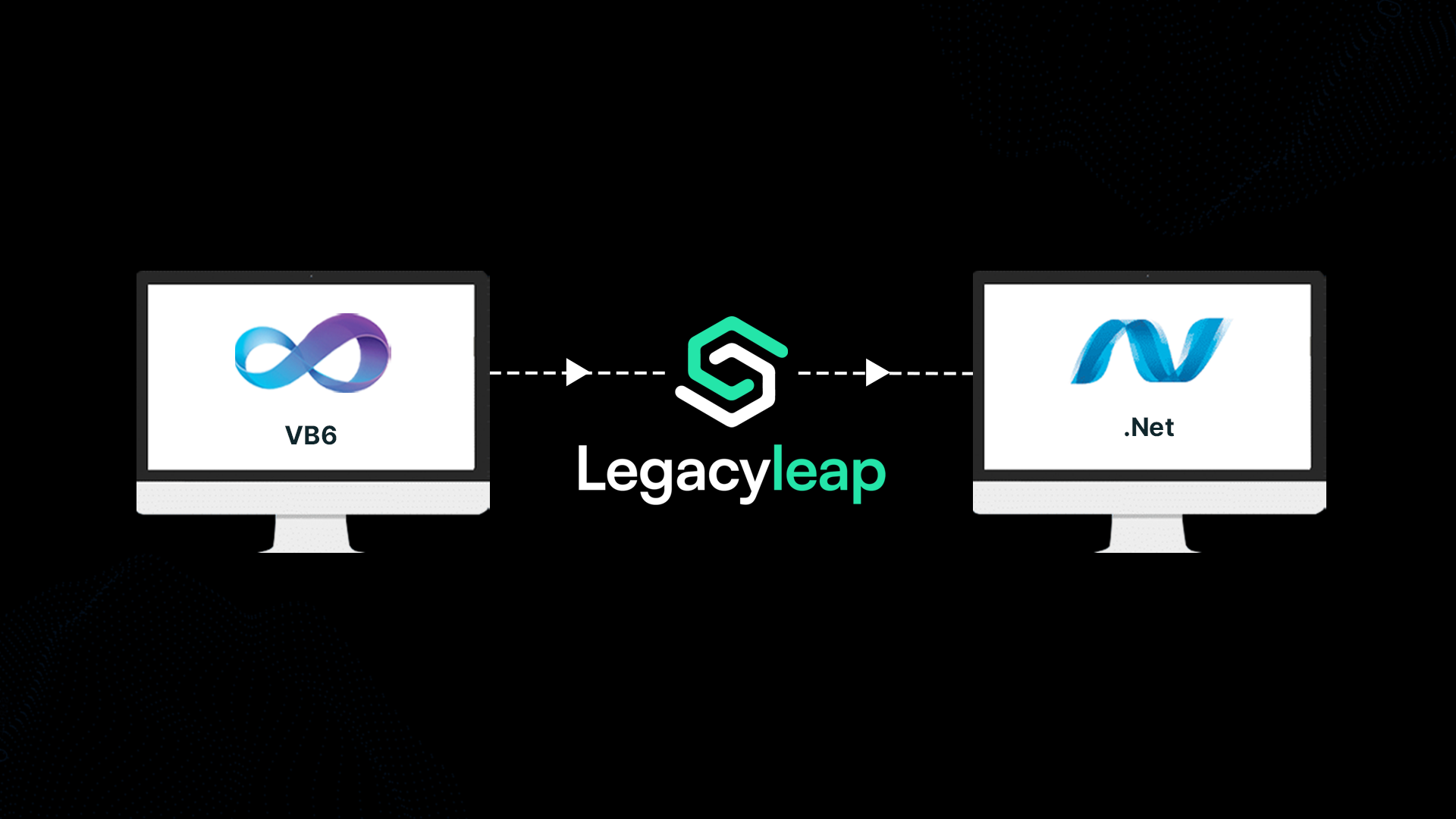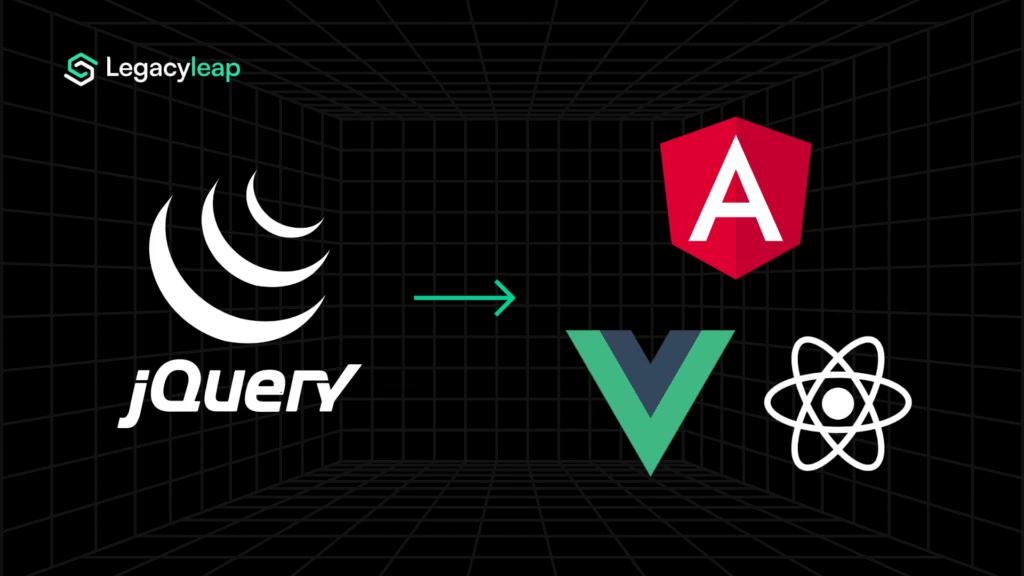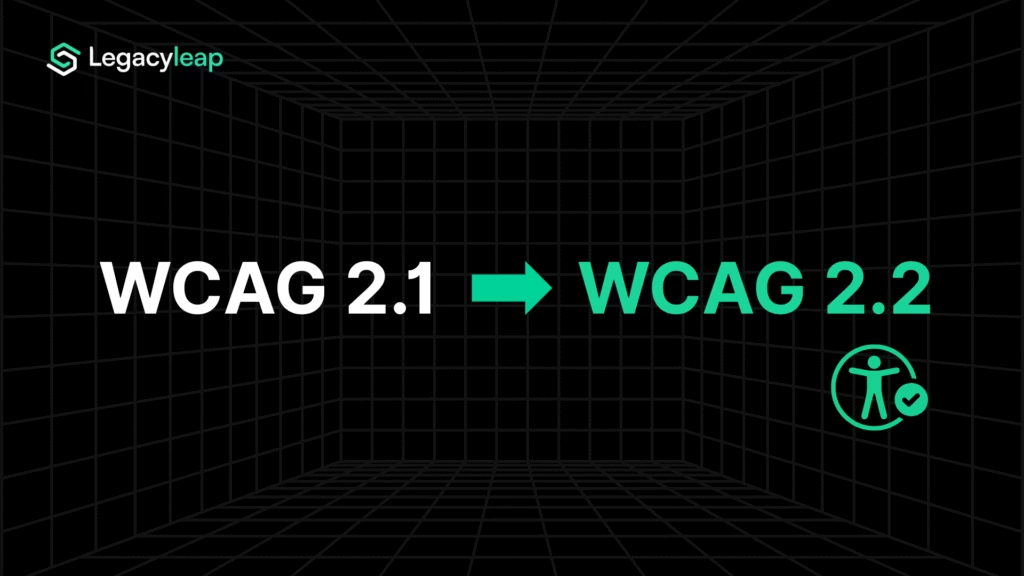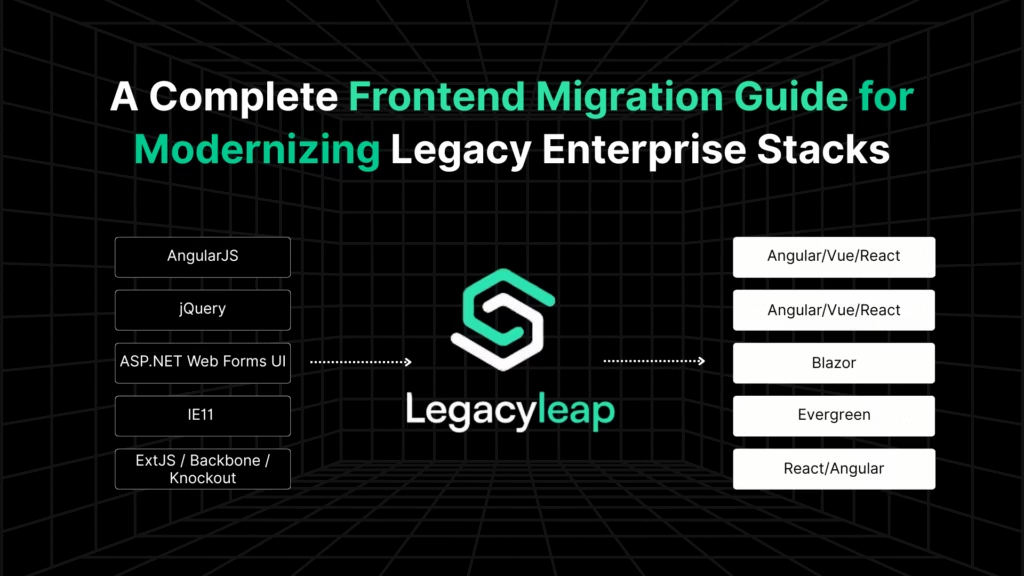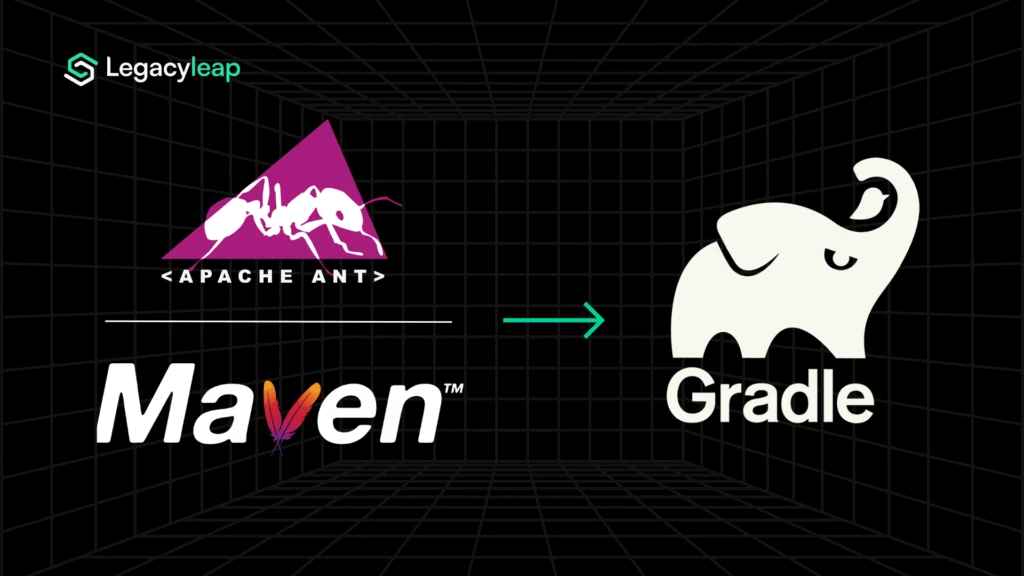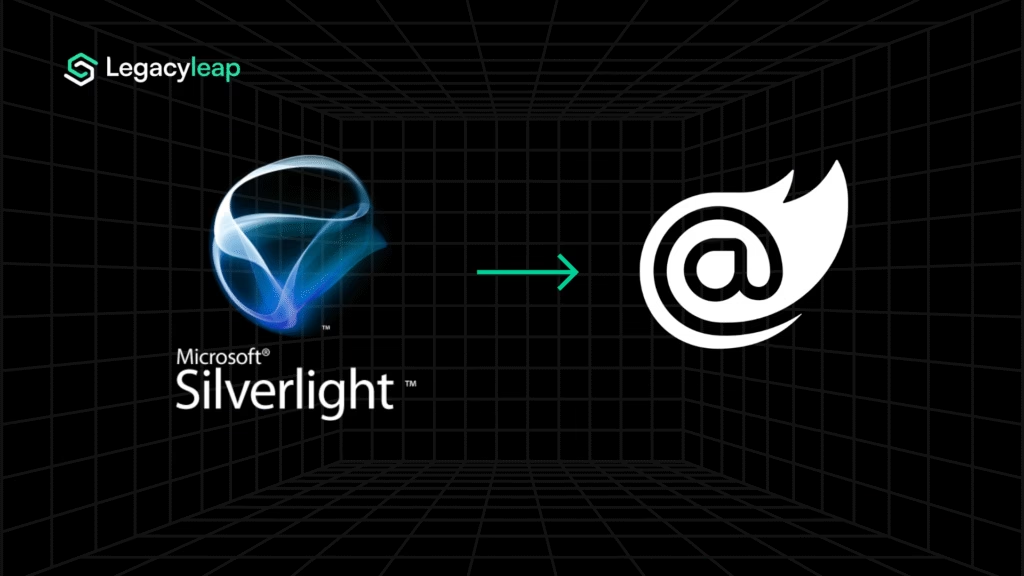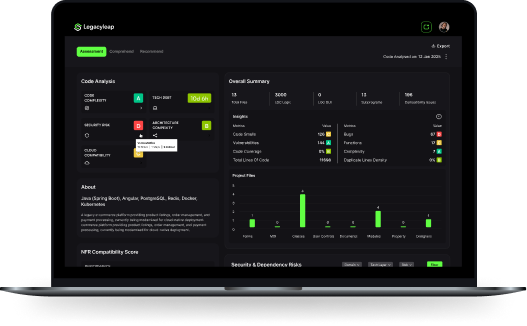By the time Visual Basic 6.0 launched in 1998, it dominated the landscape, with two-thirds of all business application programming on Windows PCs done in Visual Basic and nearly 3.5 million developers worldwide – over ten times the number of C++ programmers.
However, this once-cutting-edge framework has become a growing liability, making modernization to .NET essential for future-proofing legacy systems.
.NET surpasses VB6 in security, scalability, integration capabilities, and creator development support backed by a large community, advantages that VB6 lacks. Yet, the modernization path is filled with challenges, leading to high failure rates due to outdated architecture, missing documentation, and a shortage of developers skilled in both VB6 and .NET frameworks.
This article takes a forward-looking approach, exploring how Generative AI, when combined with human expertise, can be a game changer in navigating these obstacles. With Gen AI, we’ve seen reduced modernization cycle times by 40%, enhanced codebase understanding by twice, and lowered implementation and business risks by 40%.
By exploring both the strengths and limitations of Generative AI, we’ll show how VB6 migration automation can streamline the transition to .NET. This makes the process faster, more secure, and less risky for enterprises in 2025.
Challenges in Migrating from VB6 to .NET Using Traditional Methods
Modernizing legacy systems like VB6 to .NET is often a complex and labor-intensive endeavor. While VB6 was once a dominant platform, its outdated architecture now presents significant drawbacks.
Applications built on VB6 struggle with security vulnerabilities, holding an extremely high risk score of 9.3. This score, on a scale of 1 to 10, reflects the level of risk due to outdated security protocols, high maintenance costs, and operational inefficiencies, making modernization essential.
While undoubtedly necessary, migrating from VB6 to .NET isn’t a straightforward upgrade; it often involves a multi-step manual process. Organizations typically find themselves entangled in a web of deeply embedded legacy code, complex interdependencies, and outdated components.
For example, a typical VB6 application may have extensive dependencies, with hundreds of thousands of lines of code and numerous external components, which complicates the transition.
Although .NET offers a modern framework with superior performance, scalability, security features, and robust community support, the traditional modernization approach can hinder progress.
Migration tools exist, but they often require significant manual intervention to address missing features, code incompatibilities, and optimizations, making the process time-consuming and error-prone.
Furthermore, many enterprises face a skills gap, as VB6 developers are increasingly rare, resulting in higher costs and project delays. Approximately 60% of businesses are moving away from legacy systems due to increasing operational risks and costs associated with maintaining outdated technologies.
In this context, the need for an efficient, streamlined approach to modernization becomes clear—one that can leverage advanced technologies to ease the burdens of traditional methods.
With Generative AI poised to transform this landscape, the opportunity to automate and expedite the modernization journey is within reach.
Is Gen AI a more powerful approach to VB6 to .NET modernization?
When it comes to VB6 to .NET modernization, traditional methods involve a highly manual process, requiring labor-intensive code refactoring, dependency mapping, and error resolution. These steps, though effective, often lead to longer timelines and higher costs due to the complexity of legacy systems.
Generative AI, however, introduces a far more efficient approach. By automating critical tasks such as code conversion, process automation, and error detection, Gen AI can significantly reduce modernization cycle times by up to 40%, while improving codebase understanding by over 2x.
Compared to manual modernization, Gen AI-powered tools can accelerate VB6 to .NET migration by automating repetitive tasks like dependency mapping, code translation, and documentation. Yet, while Gen AI brings remarkable efficiencies, it is not a one-size-fits-all solution. Human oversight still remains crucial for guiding and refining the process.
The following sections will explore this balance in-depth, addressing where Gen AI truly outperforms traditional methods, why human expertise is indispensable, and where AI’s capabilities make the most impact in transforming VB6 applications into robust, modern .NET systems.
Practical use cases of Gen AI in VB6 to .NET Modernization

1. Code Conversion
One of the most compelling applications of Gen AI is in automating the conversion of VB6 code to modern .NET languages like C# or VB.NET. Unlike traditional methods that rely on rigid conversion algorithms, Gen AI can adapt and learn from code patterns, making it more effective at handling edge cases and complex business logic.
This reduces the time and effort required for manual code rewriting while minimizing human error with more nuanced results, refining code to meet modern architectural standards.
For instance, in a recent project for a large healthcare payer, we used Generative AI to automate the conversion of a 700,000 LOC VB6 system that handled complex business logic and financial transactions.
The AI analyzed patterns across more than 3,500 files and successfully automated the migration of 65% of the code, particularly in the transactional modules, which involved intricate business logic.
The need for manual intervention was reduced significantly, cutting project timelines by 40%.
2. Process Automation
Gen AI plays a key role in VB6 migration automation by handling time-consuming tasks such as documentation, unit test generation, and regression testing.
For example, AI-driven tools can automatically document VB6 codebases before migration and generate unit tests to ensure that the .NET version maintains the same functionality. Automating these tasks not only accelerates the process but also ensures a more consistent and reliable outcome.
In another modernization project for a retail company, Gen AI tools were employed to automate the generation of unit tests and documentation for a 500,000 LOC VB6 system with over 2,500 modules. The AI-driven automation generated 75% of the test cases, which drastically reduced manual labor and ensured more reliable and comprehensive test coverage.
This helped preserve functionality when the code was migrated to .NET, and reduced the QA timeline by 30%.
3. Error Detection and Code Refactoring
Traditional modernization methods often struggle to detect hidden bugs or inefficiencies in legacy code.
Gen AI can analyze legacy VB6 code at scale to identify patterns that indicate potential issues, such as memory leaks, inefficiencies, or outdated functions. It can then recommend refactoring options or directly rewrite portions of the code to improve performance and security.
This capability not only speeds up the migration process but also ensures that the resulting .NET application is optimized for future scalability and reliability.
We worked with a global logistics provider whose legacy VB6 application consisted of 450,000 lines of code spread across 2,200 files. Using Generative AI, we scanned and refactored the entire codebase, identifying inefficiencies such as memory leaks and outdated functions.
It detected over 200 hidden issues, including potential security vulnerabilities, and suggested refactoring options that improved the overall performance by 25% and enhanced the scalability of the modernized .NET application.
4. Code Comprehension and Documentation
Code comprehension and documentation are critical steps in the modernization process, often hindered by the complexity and lack of visibility in legacy VB6 codebases.
Gen AI can analyze intricate legacy code structures, generate documentation, and even create visual representations like flowcharts and dependency diagrams, giving developers a clear understanding of code architecture and dependencies.
This use of Gen AI for code documentation not only streamlined the modernization process but also ensured that the new .NET environment had thorough documentation, facilitating easier future maintenance and scalability.
Where Gen AI outperforms traditional methods
In scenarios requiring repetitive tasks or data-heavy analysis, Gen AI excels. The ability to scan vast amounts of legacy code and produce high-quality, automated output far surpasses manual methods.
In areas like automated testing and bug detection, AI tools can continuously learn and improve, providing more accurate predictions and refactoring suggestions than traditional rule-based tools.
For businesses, this means faster results, fewer errors, and reduced costs.
In a project with a financial services provider, we saw a 30% reduction in code migration time when using Gen AI to analyze and convert a 600,000 LOC VB6 system with 3,800 modules. The AI was able to automate 70% of the conversion, significantly reducing manual efforts.
It also scanned the code for redundancies and optimized the output, allowing the team to meet aggressive project deadlines with a high level of accuracy.
The need for human oversight
Despite its potential, Gen AI is not a silver bullet. It still requires human oversight to ensure quality and alignment with business goals.
AI models can struggle with complex, highly customized VB6 applications where implicit business logic or proprietary algorithms are involved. Human developers are needed to refine AI-generated code, address edge cases, and ensure that third-party integrations are maintained.
In a project with a manufacturing client, we used a Gen AI tool to convert a 1.2 million LOC VB6 system. However, the highly customized nature of the legacy codebase, comprising 6,500 files, meant that 40% of the generated output required significant manual tweaking.
The AI struggled to interpret certain proprietary algorithms, and while it handled routine parts of the code well, it required human intervention for custom modules and integration points.
Additionally, AI’s limitations in understanding long-term architectural requirements mean that human architects must guide the modernization strategy to avoid technical debt.
Where Gen AI makes the most impact
Gen AI delivers the greatest value in tasks that are repetitive, data-driven, or require large-scale code analysis. It is particularly useful in the early stages of modernization (code conversion, testing, and documentation), where automation can reduce the workload on developers.
However, for more complex modernization tasks like architectural redesign, integrating third-party controls, and aligning the modernized application with business requirements, human expertise remains indispensable.
Gen AI acts as an accelerator in these processes, but it is not yet mature enough to replace skilled developers and architects in managing the intricacies of VB6 to .NET migrations.
Challenges and Limitations of Gen AI in Modernization
In the context of VB6 to .NET modernization, AI tools offer significant potential for speeding up code conversion, detecting errors, and automating repetitive tasks. However, despite their allure, many of these tools are still in their infancy when it comes to handling the intricate details of complex modernization projects.
Let’s explore some of the most commonly used Gen AI-powered tools for VB6 to .NET migration and dive into their strengths and limitations. While these tools certainly bring value to the table, their current drawbacks limit their effectiveness in delivering a fully automated and seamless modernization process.
Popular VB6 to .NET Migration Tools and AI Assistants Compared
Modern AI-powered tools can aid in various aspects of the VB6 to .NET modernization journey, yet none of them present a one-size-fits-all solution.
From specialized migration tools like ArtinSoft’s Visual Basic Upgrade Companion (VBUC) to AI programming assistants like Microsoft Copilot and GitHub Copilot, each tool offers distinct advantages and faces significant limitations.
1. ArtinSoft Visual Basic Upgrade Companion (VBUC)
As one of the more dedicated tools, VBUC is designed specifically to assist in translating VB6 code into .NET, supporting both .NET Framework and .NET Core. It excels with large, complex projects by providing interoperability across development environments.
However, VBUC often produces code that needs significant manual adjustment, with frequent compilation errors and issues related to complex VB6 features. Poorly structured code further hampers its effectiveness, and advanced VB6 functionalities often require custom solutions.
2. VB Migration Partner
This tool focuses on converting VB6 applications to VB.NET while maintaining a high degree of accuracy. It supports core VB6 elements like ActiveX controls and DAO data access, integrating well with Visual Studio for a step-by-step migration process.
Despite its precision, VB Migration Partner struggles with very complex applications, particularly those that rely heavily on COM interop or third-party libraries. It often leaves developers to handle manual fixes for compile errors and runtime dependencies.
3. Microsoft Copilot and GitHub Copilot
Both Microsoft Copilot and GitHub Copilot serve as AI-driven coding assistants that provide real-time code suggestions, generate snippets, and assist with bug fixes. They can also support migrations beyond VB6, assisting with version upgrades within .NET itself, such as moving from lower to higher .NET versions.
While highly efficient for general-purpose coding, they are not tailored for migration-specific tasks, particularly those involving VB6 to .NET conversions.
Their limited understanding of legacy VB6 code, especially with intricate business logic, results in generic and sometimes irrelevant code suggestions.
Although they can speed up certain aspects of the modernization process, they are better suited for daily development tasks than comprehensive system migrations.
4. ChatGPT
While ChatGPT can answer coding questions and provide general guidance on modernization strategies, its role in VB6 to .NET migration is limited.
It lacks the technical depth required to directly convert code or assist with intricate project needs. The tool struggles to maintain context over long technical discussions, which is crucial for large-scale modernization efforts.
Additionally, its value lies more in general problem-solving than in detailed migration support.
Limitations of current Gen AI tools and Overall Landscape
The tools mentioned above—VBUC, VB Migration Partner, Microsoft Copilot, GitHub Copilot, and ChatGPT—are some of the most commonly used in the VB6 to .NET modernization space because they can handle larger chunks of the migration process.
However, while they automate several aspects, these tools still present notable limitations when applied to more complex modernization tasks. Key challenges include limited context understanding, inadequate refactoring capabilities, and difficulties with handling third-party controls, all of which place an ongoing burden on developers to manually intervene and make corrections.
The reality is that legacy modernization is a multifaceted process, broken into several intricate steps: code conversion, system integration, refactoring, and quality assurance, among others. The broader issue with Gen AI in this context is not just the limitations of individual tools but the overwhelming landscape of Gen AI tooling as a whole.
Modernization requires specialized tools for each step, but with such a vast number of available options, finding the right tool for each specific task becomes a challenge in itself.
Key Considerations When Choosing VB6 to .NET Migration Tools:
- Support for ActiveX controls and COM objects
- Ability to convert business logic with minimal manual rewrite
- Built-in testing, validation, and rollback features
- Integration with Visual Studio or .NET Core
- Compatibility with your VB6 to .NET migration strategy
For instance, if you search for task-specific Gen AI tools within the Hugging Face community, let’s say for ‘translation’ purposes, you will find over 4,700+ models listed for this single task. Imagine incorporating a translation model into your business’s ecosystem; you’d have to evaluate these 4,700+ tools, identify which performs best, and then assess its fit for your use case.
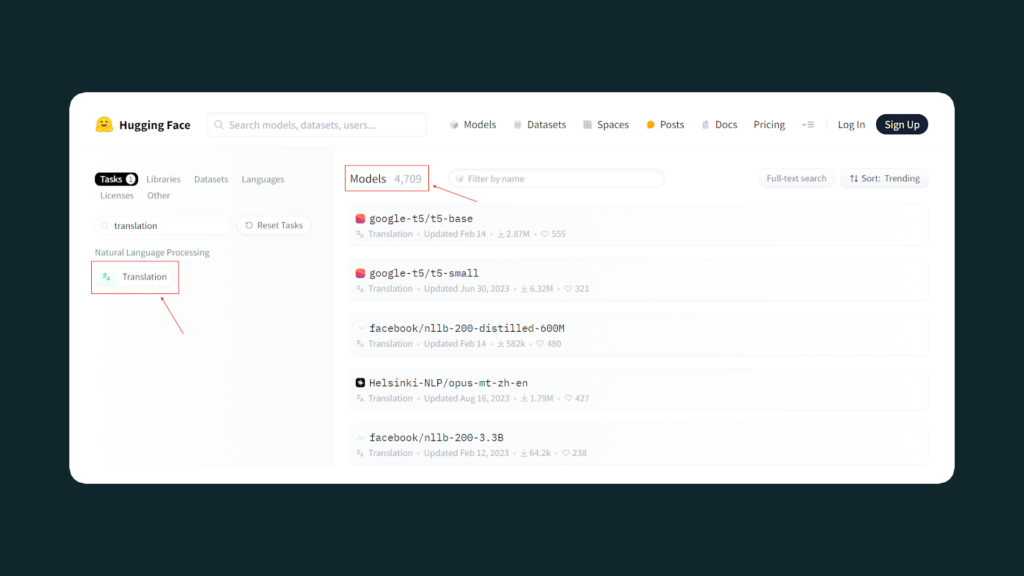
The same issue applies to VB6 to .NET modernization. Developers are not only tasked with understanding the limitations of AI tools but are also overwhelmed by the sheer number of choices available. The burden still falls on the developers to sift through these options, conduct evaluations, and make decisions about which tools to deploy at each stage of the migration.
While Gen AI promises to assist, it does not yet relieve developers of the heavy lifting required to complete a complex modernization project.
Choosing the Right Tools and Partners
Most VB6 to .NET migration tools focus on code conversion: translating syntax, auto-generating forms, or replicating UI elements. But successful modernization demands more than that. It requires understanding how legacy components interact, where hidden dependencies live, and how business logic flows through layers of outdated architecture.
Before committing to a tool, evaluate what it actually delivers.
- Does it map control flow across modules?
- Does it flag COM interop, legacy DLLs, or API calls that will break in .NET?
- Can it preserve business logic and regenerate validation workflows?
- Does it provide outputs your engineering team can test and trust?
Equally important is who operates the tooling. For business-critical systems, internal teams often don’t have VB6 expertise, and generic Gen AI copilots lack context. That’s where the right partner matters. One that not only understands VB6 and .NET at a deep level, but can apply Gen AI in a way that’s grounded in system behavior, not just surface syntax.
The combination of precise tooling and experienced oversight reduces rework, shortens migration timelines, and eliminates blind spots that derail modernization midstream.
Legacyleap – An all-in-one Modernization Solution
Reflecting on the current modernization landscape, it’s clear that while traditional methods have been effective in handling the complexities of VB6 to .NET migration, Gen AI brings a new level of efficiency. Developers using traditional tools still face a range of manual, time-consuming tasks that Gen AI can help streamline.
The challenge isn’t that traditional methods don’t work; it’s that they demand considerable effort, making it harder to meet today’s speed and agility demands.
Legacyleap seeks to combine the best of both worlds: the efficiency of Gen AI and the precision of human expertise, delivering a solution that not only automates but also strategically guides the modernization journey.
Here’s a brief overview of how Legacyleap transforms VB6 to .NET modernization.
- Purpose-built for VB6 to .NET: Years of research have shaped Legacyleap, specifically designed for VB6 to .NET migrations. Our solution covers the entire process, from code conversion to deployment, addressing real-world modernization challenges.
- Curated Gen AI tools + Developer expertise: We’ve done the heavy lifting, curating the best Gen AI tools for each task. Our team combines automation with human expertise, choosing the right tool for code conversion, refactoring, or debugging, ensuring precision at every step.
- Targeted efficiency gains with Gen AI: Legacyleap leverages Gen AI for faster, smarter modernization. From dependency analysis to risk reduction, we use AI to automate critical tasks, slashing timelines and mitigating risk while ensuring seamless code transitions.
- Advanced LLM-driven features: Our platform offers unique AI-driven capabilities like automated diagram generation, code analysis, and test case generation, improving visibility, documentation, and code validation throughout the modernization process.
- Unique approach to solutioning: We set ourselves apart by how we interact with tool vendors, cloud platforms, and IT service companies. Legacyleap integrates seamlessly, aligning technology with business needs to maximize value across the board.
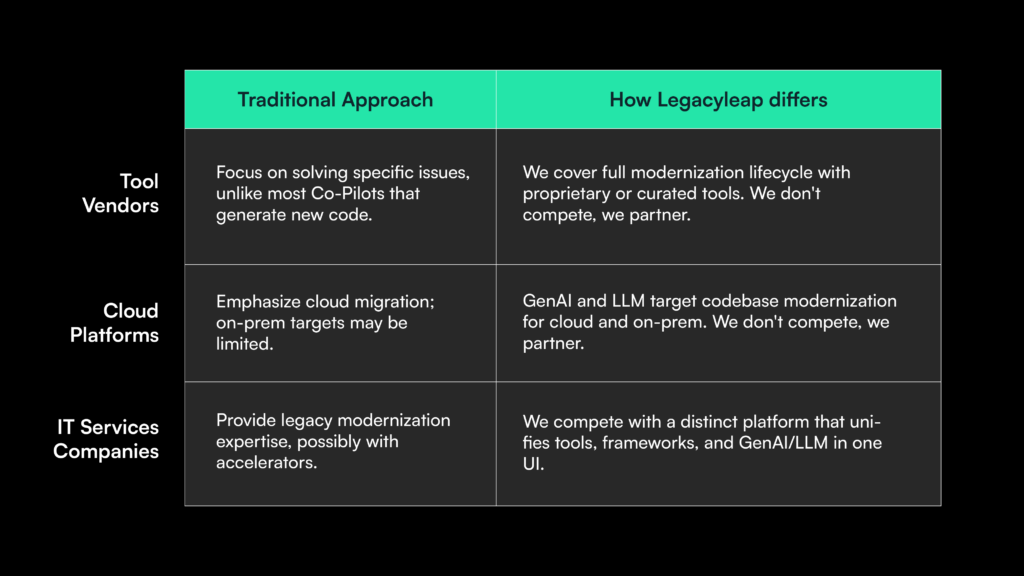
- Strategic, end-to-end orchestration: Legacyleap aligns modernization with your business goals, streamlining each phase using Gen AI orchestration. Our comprehensive approach minimizes disruption and maximizes long-term impact.
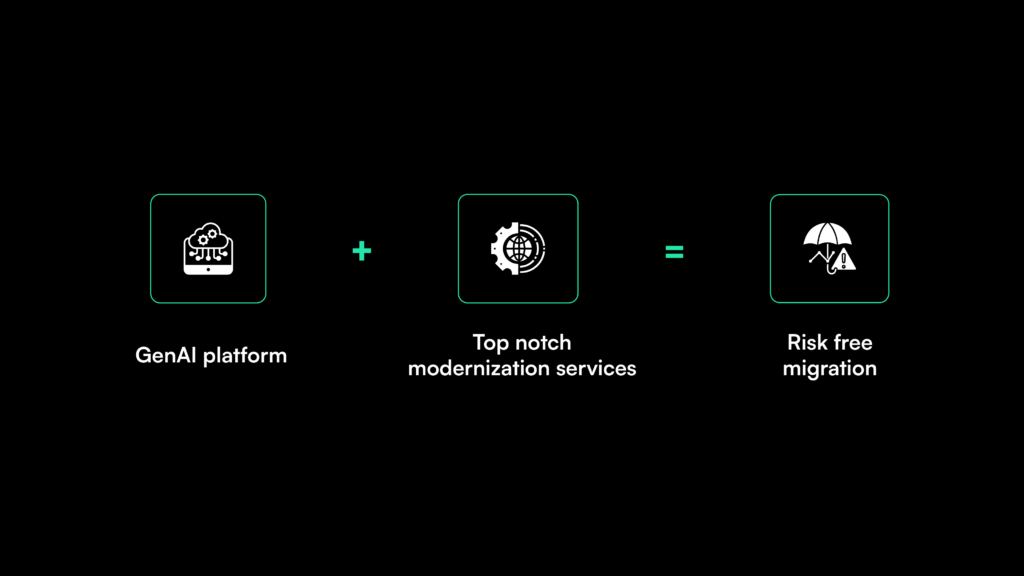
Interested in reimagining VB6 to .NET modernization with Gen AI? Book a meeting with us to learn more about how we can help you with this!
FAQs
With traditional methods, migrating a large VB6 application could take 6-12 months. Using Legacyleap, most projects are completed in 2-4 months end-to-end from code comprehension to deployment. Our platform automates up to 70% of the effort, including documentation, transformation, testing, and artifact generation, drastically accelerating timelines without compromising quality.
VB6 is no longer supported by Microsoft, which means increasing security vulnerabilities, compatibility issues, and a shrinking talent pool. The longer you delay, the more undocumented business logic is lost as maintainers leave. This raises migration costs and risks over time, especially for systems still running critical operations.
Yes. Legacyleap supports phased modernization. You can start with high-risk or high-value modules and modernize incrementally. The platform’s modular architecture enables partial transformation, seamless integration with legacy components, and rollback planning, giving you full control over modernization scope and pacing.
If your VB6 application is business-critical, hard to maintain, lacks documentation, or relies on deprecated dependencies, it’s ready. During our free $0 assessment, we analyze the source code for risks, architecture drift, API dependencies, and functional complexity so you know exactly what’s feasible, what’s risky, and what’s worth prioritizing.
Successful migrations depend on three things: deep system understanding, controlled transformation, and validated output. Legacyleap delivers all three by mapping business logic, automating the bulk of code conversion, and generating test suites to ensure the new .NET application mirrors the original. That’s how we reduce risk while speeding up delivery.


